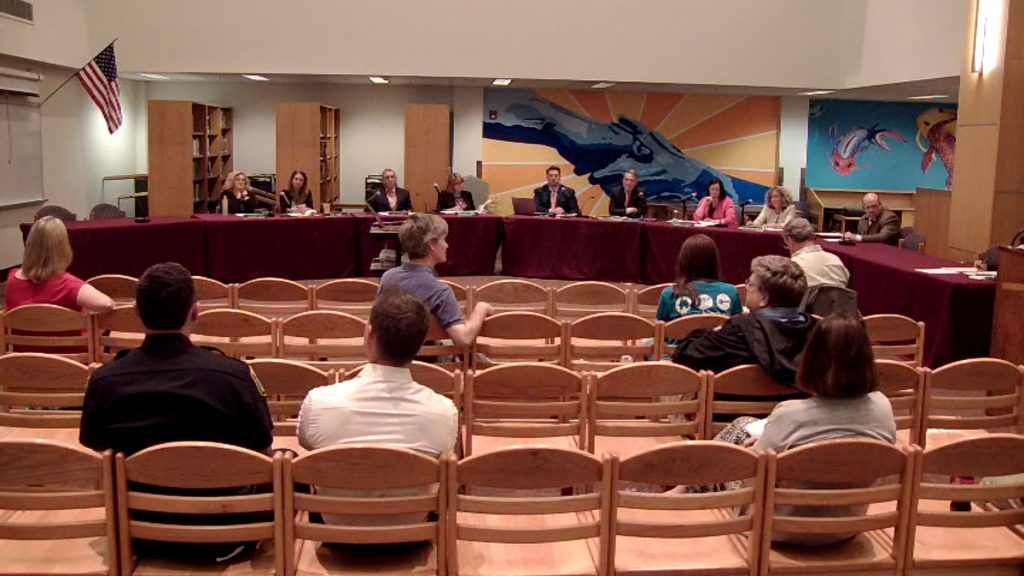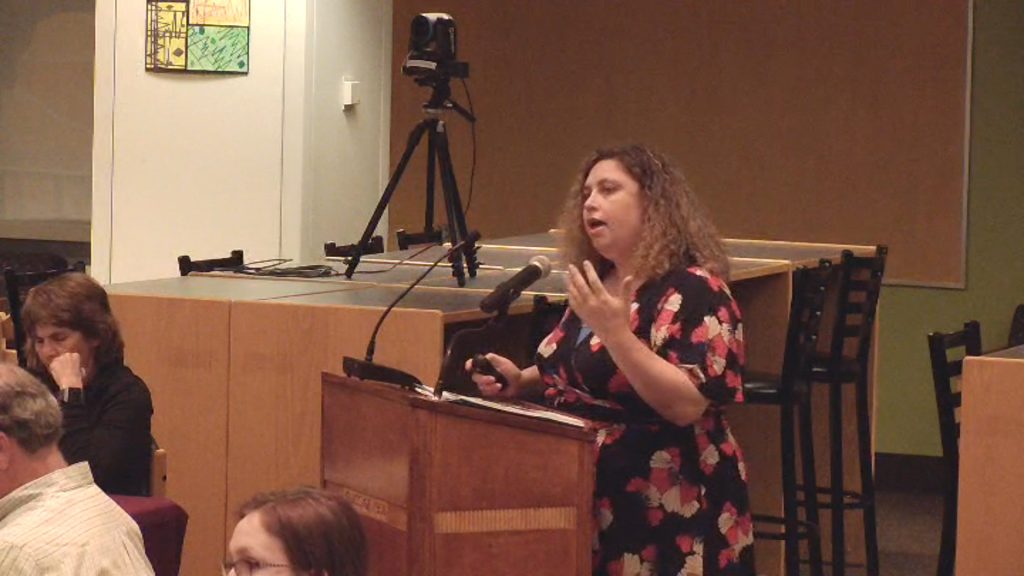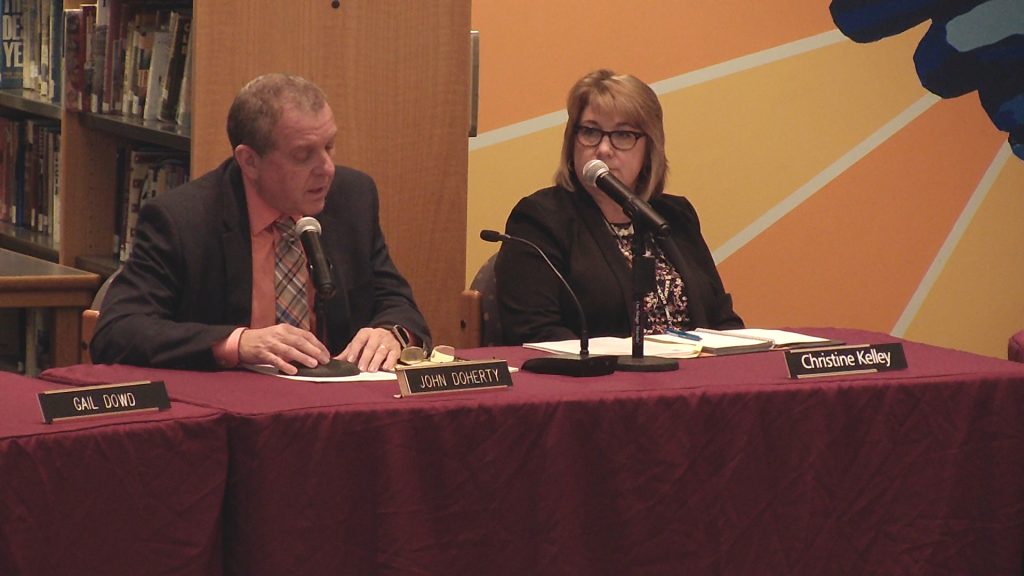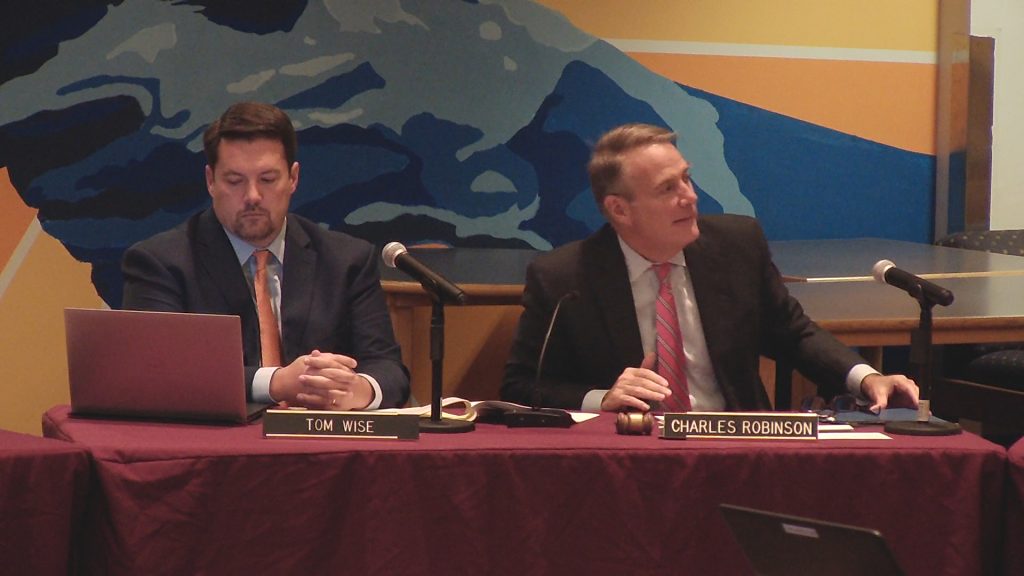 Erica McNamara, Director of the Reading Coalition Against Substance Abuse (RCASA), presented the results of the 2019 Youth Risk Behavior survey to the School Committee on September 12. The 111 question survey was administered to students at the Reading Memorial High School (RMHS) last spring, seeking to determine the prevalence of identified risk behaviors amongst members of the RMHS student body. It also measures protective factors that are in place for students. McNamara shared that research has shown that student surveys are just as reliable as similar surveys administered to adults.
Erica McNamara, Director of the Reading Coalition Against Substance Abuse (RCASA), presented the results of the 2019 Youth Risk Behavior survey to the School Committee on September 12. The 111 question survey was administered to students at the Reading Memorial High School (RMHS) last spring, seeking to determine the prevalence of identified risk behaviors amongst members of the RMHS student body. It also measures protective factors that are in place for students. McNamara shared that research has shown that student surveys are just as reliable as similar surveys administered to adults.
McNamara reported several encouraging results when compared with past surveys. Cigarette use has dropped to six percent from eighteen percent in 2005, though forty percent of the students reported having tried vaping, a result that is up from thirty-six percent in 2017. Underage drinking has dropped from forty-five percent in 2005 to thirty-three percent in 2019 with sixty-four percent reporting that they have not attended a party where alcohol was served in the past year. Fourteen percent reported having ridden in a car with a person who had been drinking, down from seventeen percent. McNamara reminded the committee that the survey does not ask if the person was a parent or other adult. Marijuana use is also down to twenty-two percent from twenty-five percent. Only three percent reported drinking while on school grounds, down from eight percent. Five percent of students reported taking prescription drugs that were not prescribed for them, this is down from eight percent in 2011.
 Thirty-five percent of students reported that their primary stressor was school demands, with twenty-four percent reporting that a busy schedule was a primary source of stress. When asked what the causes of school-related stress were, twenty-eight percent listed keeping up with schoolwork as the leading cause. Twelve percent of students reported that they were victims of electronic bullying, which is down from twenty-three percent in 2011. Twelve percent also reported being bullied on school property, down from twenty-seven percent in 2011. McNamara believes that these gains are a result of the many anti-bullying efforts the schools have undertaken. Six percent of students surveyed reported that they did not go to school because they felt unsafe. Two percent reported carrying a weapon to school, while five percent reported that they had been threatened by a weapon.
Thirty-five percent of students reported that their primary stressor was school demands, with twenty-four percent reporting that a busy schedule was a primary source of stress. When asked what the causes of school-related stress were, twenty-eight percent listed keeping up with schoolwork as the leading cause. Twelve percent of students reported that they were victims of electronic bullying, which is down from twenty-three percent in 2011. Twelve percent also reported being bullied on school property, down from twenty-seven percent in 2011. McNamara believes that these gains are a result of the many anti-bullying efforts the schools have undertaken. Six percent of students surveyed reported that they did not go to school because they felt unsafe. Two percent reported carrying a weapon to school, while five percent reported that they had been threatened by a weapon.
Twenty-four percent of the students surveyed met the depression indicator at least once in the past year, while nineteen percent of students reported being treated by a professional for emotional health. Twelve percent of students also indicated that they had performed cutting or other self-harm behavior, which is down from seventeen percent in 2007. Three percent of students reported attempting suicide, eight percent made a suicide plan, while ten percent considered suicide in the past year. All these numbers are lower than in 2005, though McNamara was quick to point out that even one is too many.
The survey also asks students about sexual behavior. Twenty-six percent of students reported that they had had sexual intercourse, which is down from twenty-eight percent in 2005, thirty-eight percent of these reported that they used a condom. Twenty-one percent reported having had sexual intercourse in the last three months. Three percent reported that their first sexual experience occurred before the age of eleven years old. Nine percent reported being the victim of sexual violence, with five percent reporting sexual violence occurring while they were in a dating relationship. Twenty-one percent of surveyed students reported using drugs or alcohol before engaging in sexual behaviors. Sexual or nude photographs were sent or received electronically by thirty-three percent of the students surveyed.
 Forty-one percent of the students taking the survey reportedly sent a text while they are driving, which is up from twenty-one percent in 2017. McNamara shared that this figure is lower than the results of similar surveys given to adults. “We are not setting a good example,” McNamara commented. Seven percent of students reported driving after drinking. Four percent reported that they never wear a seatbelt.
Forty-one percent of the students taking the survey reportedly sent a text while they are driving, which is up from twenty-one percent in 2017. McNamara shared that this figure is lower than the results of similar surveys given to adults. “We are not setting a good example,” McNamara commented. Seven percent of students reported driving after drinking. Four percent reported that they never wear a seatbelt.
McNamara concluded by reporting on protective factors. Eighty-seven percent of surveyed students reported that they have a trusted adult to talk to outside of school, sixty-five percent have a trusted adult in school. Forty-four percent of students had spoken with parents regarding sexual behavior. Ninety-six percent believe that their parents disapprove of smoking, ninety percent believe they disapprove of drinking, and eighty-one percent believe they disapprove of marijuana use.
Ninety-two percent of RMHS students reported getting more than sixty minutes a day of physical activity, though sixty-two percent reported that they do not eat breakfast seven days a week. Seventy-nine percent reported not getting eight hours of sleep a night. McNamara explained that lack of adequate sleep increases other risk factors such as substance abuse.
 Earlier in the School Committee meeting, Patrick Tompkins, chair of the Permanent Building Committee (PBC), reported on that committee’s inventory and review of the school buildings. The PBC found that all eight of the school buildings are well-maintained and in good repair. While all the buildings are showing their age, Tompkins reported that the Facilities Department is doing a good job with a well-thought-out plan of routine maintenance. Most issues that were found have already been dealt with, or are in the capital plan over the next several years. “There isn’t much that jumps out at us as ‘This is really a problem.’” Tompkins shared.
Earlier in the School Committee meeting, Patrick Tompkins, chair of the Permanent Building Committee (PBC), reported on that committee’s inventory and review of the school buildings. The PBC found that all eight of the school buildings are well-maintained and in good repair. While all the buildings are showing their age, Tompkins reported that the Facilities Department is doing a good job with a well-thought-out plan of routine maintenance. Most issues that were found have already been dealt with, or are in the capital plan over the next several years. “There isn’t much that jumps out at us as ‘This is really a problem.’” Tompkins shared.
Tompkins advised that most school buildings have a lifespan of about fifty to seventy-five years, thus the community should be looking at a school replacement or upgrade every eight to ten years. The oldest of the schools, Killam Elementary School, is now fifty years old and has never had a major upgrade. Tompkins shared that any planned work at the school buildings being thought of currently is still about three to five years from “shovels in the ground” but that the town is on the right path, trying to determine what the real community needs are that should be addressed.
The School Committee adjourned to executive session at 8:45 pm.
